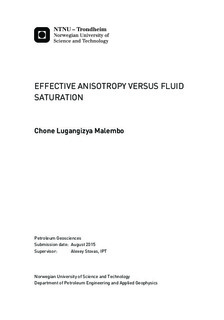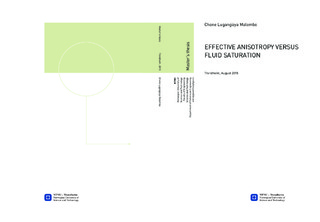| dc.contributor.advisor | Stovas, Alexey | |
| dc.contributor.author | Malembo, Chone Lugangizya | |
| dc.date.accessioned | 2015-10-07T14:00:14Z | |
| dc.date.available | 2015-10-07T14:00:14Z | |
| dc.date.created | 2015-08-11 | |
| dc.date.issued | 2015 | |
| dc.identifier | ntnudaim:13883 | |
| dc.identifier.uri | http://hdl.handle.net/11250/2353211 | |
| dc.description.abstract | Anisotropy has proved to be a reliable means for determination of the rock properties necessary to characterize the subsurface. VTI is a form of anisotropy which provides an estimate of the layered earth.
This report summarises a work done on well data acquired in one well in Cote d Ivore. The data consisted P- and S-waves velocities and density of isotropic thin layers at different fluid saturations.
Backus averaging was used for creation of the effective medium in the form VTI. Stiffness coefficients of the effective media were then determined from which the vertical P- and S-waves velocities were calculated.
Additionally, the three anisotropy parameters, epsilon, delta and gamma were calculated for each fluid saturation.
Analysis of the variation of all the five parameters has been made, from which the P-wave velocity has been found to increase when water is in the pores as compared to oil and gas. Fluid substitution has been found to have a negligible effect on S-wave velocity and gamma.
Gas has also been found to have the largest effect on P-wave anisotropy. The moveout parameter delta has been observed to have a more complex response to fluid substitution bringing an attention and a call to revisiting the conclusion that eta is invariant of fluid saturation. | |
| dc.language | eng | |
| dc.publisher | NTNU | |
| dc.subject | Petroleum Geosciences, Petroleum Geophysics | |
| dc.title | EFFECTIVE ANISOTROPY VERSUS FLUID SATURATION | |
| dc.type | Master thesis | |
| dc.source.pagenumber | 58 | |

